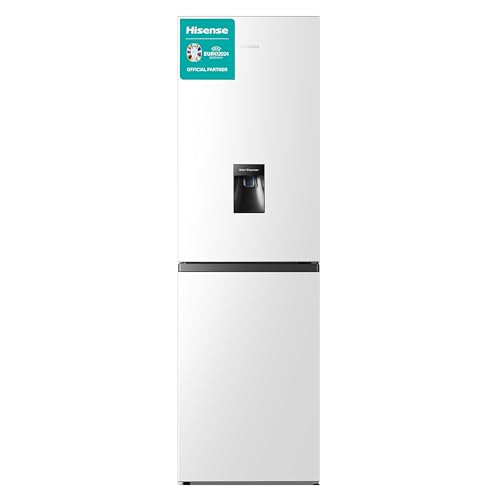
Large Fridge Freezers Uk
Add a review FollowOverview
-
Founded Date March 18, 1919
-
Posted Jobs 0
-
Viewed 7
Company Description
Nine Things That Your Parent Teach You About Fridge UK
The Comprehensive Guide to Refrigerators in the UK
Fridges are an important home appliance in every family, serving a crucial role in food preservation and security. The UK market uses a diverse series of fridge types, sizes, functions, and brands. This article intends to supply a thorough understanding of refrigerators offered in the UK, including their features, energy performance, and elements to think about when buying.
Kinds Of Refrigerators Available in the UK
When looking for a refrigerator, it is essential to comprehend the various types offered. Each type features its own set of features and functions, accommodating various requirements and choices. The most typical types of refrigerators found in the UK include:

1. Leading Freezer Refrigerators
- Description: The standard style, including the freezer compartment on top.
- Pros: More inexpensive, roomy, simple access to fresh food.
- Cons: Limited freezer area, the top might be less hassle-free for bulk products.
2. Bottom Freezer Refrigerators
- Description: Freezer is located at the bottom, allowing much easier access to fresh food.
- Pros: Greater convenience, much better presence of fresh products.
- Cons: Usually more expensive, some may deal with big frozen products.
3. Side-by-Side Refrigerators
- Description: Features two vertical compartments, one for the fridge and one for the freezer.
- Pros: Ample storage space, simple to access both frozen and fresh foods.
- Cons: Wider footprint, they might not fit in smaller sized kitchens.
4. French Door Refrigerators
- Description: Combines functions of bottom freezers and side-by-sides, with 2 doors for the fridge on top.
- Pros: Stylish design, roomy, and frequently consists of innovative features.
- Cons: Higher price point, aligns improperly with smaller kitchen area designs.
5. Compact Refrigerators
- Description: Smaller models developed for limited areas.
- Pros: Ideal for small apartments or offices, energy-efficient.
- Cons: Limited storage capacity, might lack features.
6. Integrated Refrigerators
- Description: Designed to blend flawlessly with kitchen area cabinets.
- Pros: Custom fit, aesthetic appeal, increases home worth.
- Cons: Higher expense, may use less versatility in placement.
7. Smart Refrigerators
- Description: Equipped with Wi-Fi and clever innovation functions.
- Pros: Advanced includes like touch screens and internal video cameras.
- Cons: Expensive, more intricate to repair.
| Refrigerator Type | Availability | Typical Price Range | Energy Efficiency |
|---|---|---|---|
| Leading Freezer | Moderate | ₤ 300 – ₤ 600 | Typical |
| Bottom Freezer | High | ₤ 400 – ₤ 800 | Above Average |
| Side-by-Side | Easy | ₤ 800 – ₤ 1500 | Varies |
| French Door | High | ₤ 800 – ₤ 2000 | High |
| Compact | Restricted | ₤ 200 – ₤ 500 | Typical |
| Integrated | Custom | ₤ 1000 – ₤ 2500 | High |
| Smart | Variable | ₤ 1200+ | High |
Secret Features to Consider
- Energy Efficiency: Look for designs that are energy-efficient. In the UK, appliances are rated from A (most efficient) to G (least efficient). An A+ score and above can cause considerable energy savings.
- Capability: Choose a fridge Uk with adequate capability for your home. A basic guideline is 100-200 liters per individual.
- Sound Level: Consider models that run quietly, specifically if the cooking area is near living spaces.
- Cooling Technology: Features like frost-free innovation are worth the financial investment, as they decrease maintenance.
- Adjustable Shelves: Having adjustable racks improves the versatility to keep larger items.
- Temperature level Control: Check for user friendly temperature controls and zones for various kinds of food.
- Style: Choose the design and color that matches your kitchen visual, whether you choose a contemporary stainless steel appearance or a traditional retro finish.
Buying Tips
- Identify Your Needs: Consider your cooking practices, household size, and cooking area space.
- Set a Budget: Refrigerators been available in different rate varieties. Develop a spending plan before you start shopping.
- Research Energy Ratings: Invest in energy-efficient designs to conserve on energy costs.
- Check out Reviews: User experiences can offer insights into dependability and performance.
- Compare Brands: Some brands are understood for their toughness while others might use more innovative functions.
Regularly Asked Questions (FAQs)
1. How long do refrigerators normally last?
- Fridges generally last in between 10 to 20 years, depending on the brand and how well they are kept.
2. Exist any maintenance tips for prolonging the life of a refrigerator?
- Frequently tidy the coils, examine the door seals, and periodically defrost if needed to preserve optimum performance.
3. What is the best size refrigerator for a family of four?
- For a family of four, a refrigerator with a capability of around 400-600 liters is usually enough.
4. Do I require to stress over energy consumption when buying a refrigerator?
- Yes, energy consumption is crucial. Try to find systems with high energy effectiveness scores to lower monthly expenses.
5. Should I choose a fridge with a water and ice dispenser?
- This function can be convenient, particularly for families. Nevertheless, it might require more maintenance than standard models.
Purchasing a refrigerator is a substantial choice for any home in the UK. With various types offered, each with its unique features and benefits, it is crucial to examine individual requirements before making a choice. By thinking about aspects such as energy efficiency, capability, and design visual appeals, consumers can choose a fridge that lines up well with their way of life, ultimately boosting their cooking area experience while protecting food quality and freshness.
